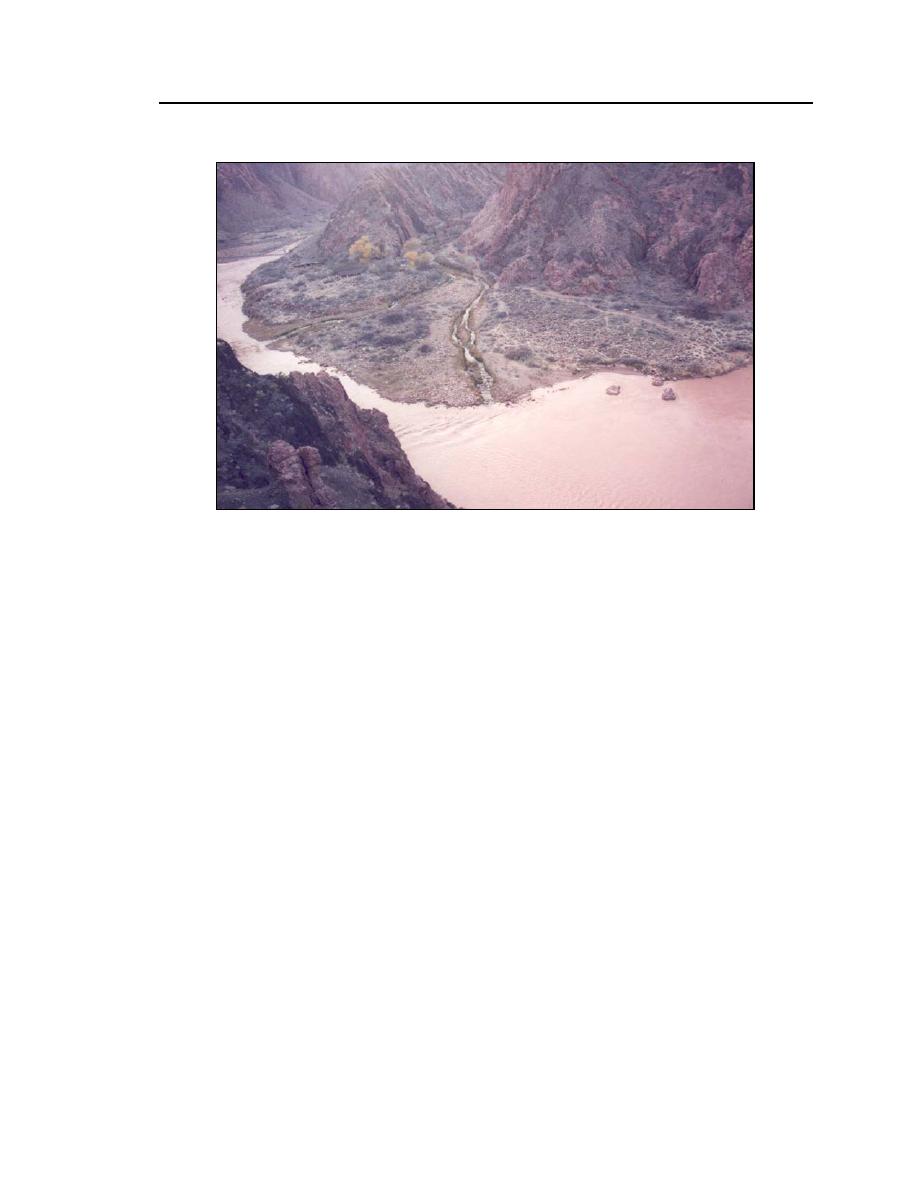
Chapter 3. Geomorphology
61
Figure 17. Conical shape and distributary flow pattern developed on an
alluvial fan at the bottom of the Grand Canyon where Bright Angel Creek
enters the Colorado River.
on alluvial fans in arid regions (Cazanacli et al. 2002). The type of process that
predominates on a particular fan depends on several factors, including lithology
(Blair 1999), climate (Hooke 1967, Bull 1977, Harvey 1992), and drainage area
(Hooke and Rohrer 1979, Harvey 1984, Waters and Field 1986).
Channel avulsions--the rapid diversions of flow from one channel into another
due to blockage of the channel by sediment or debris --are not unique to alluvial
fans (Schumann 1989, Gay et al. 1998), but they are very important in the
development and maintenance of the conical shape (Fig. 18) (Field 2001). Debris
flow fans provide dramatic examples of avulsions caused by the blockage of deep
(>7 m) channels and incision of new equally deep channels elsewhere on the fan
surface (Chawner 1935, Kesseli and Beaty 1959, Morton and Cambell 1974,
Whipple and Dunne 1992). While the location of new channels is more difficult to
predict on debris flow fans, avulsions on streamflow-dominated fans typically
occur where banks are low and always occupy a pre-existing flow path (Fig. 18)
(Field 2001). Overland flow generated by discontinuous ephemeral stream systems
active on many fan surfaces in southern Arizona leads to avulsions (Field 2001).
Five distinct channel morphologies are associated with different stages of the
avulsion process on alluvial fans in southern Arizona (Fig. 19). The changes in
morphology through time at a single point reflect the rapid channel enlargement



 Previous Page
Previous Page
